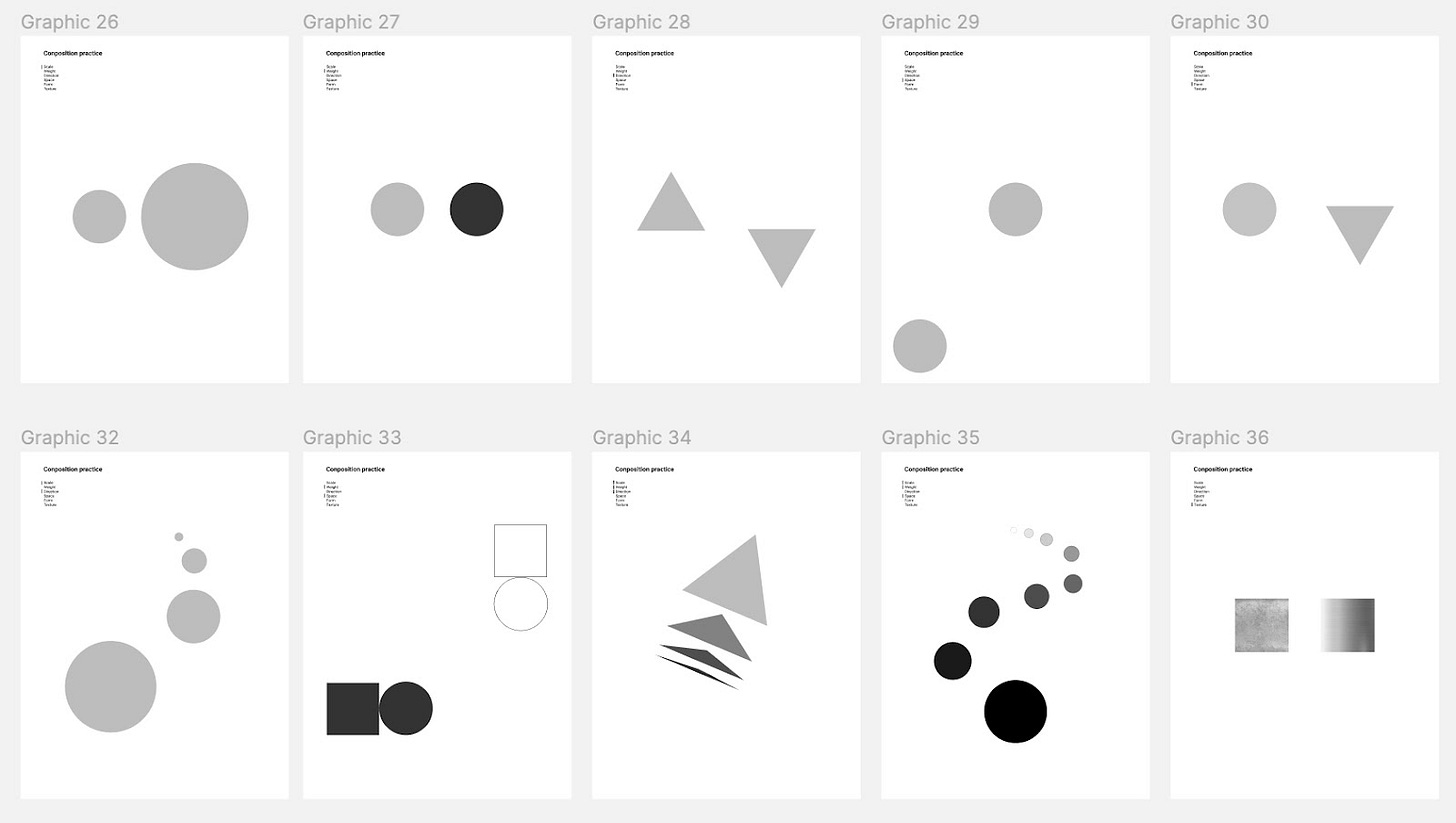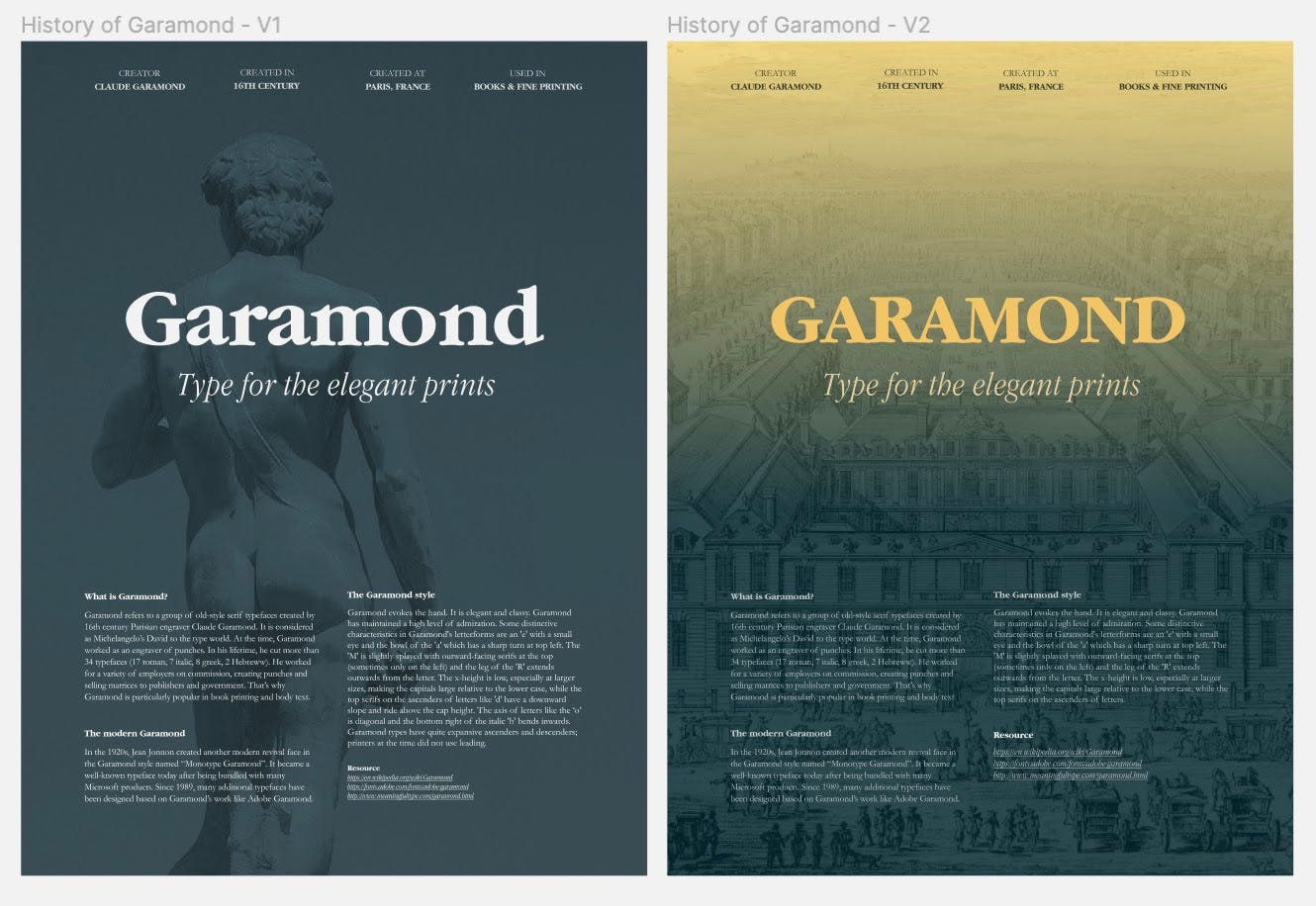A Sincere Review of Graphic Design Specialization by CalArts on Coursera
How I practice and improve my graphic design skills - Part I
Backstory: Why I take a graphic design specialization as a professional product designer
Growing up, I was always the child who couldn’t move my eyes away from beautiful pictures. I collected posters, stamps, CD covers, and everything I think is pretty. And I dreamed of making these beautiful designs myself one day.
Years later, I was able to fulfill my dream of becoming a product designer. However, I still found myself troubled in my graphic skills. To be fair, there are not enough opportunities for me to practice. Visual languages like color palettes, typography, page layouts, etc., are usually pre-defined for better UX consistency and efficiency. I received training to use and apply visual languages properly but rarely got chances to form new ones.
To accelerate my growth in graphic design, I decided to take some dedicated effort outside of work. So four months ago, I started a self-learning journey by taking the Coursera specialization Graphic Design Specialization by CalArts.
Course structure
There are four fundamental graphic design courses and one capstone project (Brand new brand) that can be completed once all the other courses are finished.
The courses are:
Fundamental graphic design
Image-making
Fundamentals of typography
History of image-making
Brand new brand (Capstone)
If you are interested in learning more about the syllabus, check this link to Coursera.
Duration
I spent 3 hours a week for four months to complete the entire specialization, including 1 hour for classes and 2 hours for homework. I was very comfortable with this pace. I wanted to take more time practicing what I learned each week in my daily work. I have seen others finishing the entire specialization in a month, which is more cost-effective.
Why Graphic Design Specialization by CalArts on Coursera?
I choose Coursera as it has a recommended schedule to keep me on speed but is flexible enough to adjust. What I also liked about this specialization:
1. A systematic overview of all graphic design fundamentals
This specialization covers the fundamentals of image-making, typography, and basic concepts of shape, color, and composition. It helps me identify my knowledge gap. For example, I understood typography a lot better by immersing myself in the history of each type. I also got to learn essential elements of graphic design and try to practice and apply them.
2. Introduction to a wide range of techniques, styles, and artists
“Make the unexpected of the original, graphic design isn’t about perfection, it is about enjoying the process of making.”
The course is stress-free and encourages me to diverge from perfection and focus on what sparks innovation and creativity. I picked up a set of transferable formal and conceptual tools for “making and communicating” in graphic design. I found a lot of inspiration from historical and modern designers ranging from Paul Klee, Herbert Bayer to Lester Beall, Paul Rand, etc.
3. Learn how to critique visual designs beyond “I like/dislike it.”
As a non-English native speaker, I found it helpful to note the lecturer’s critique technique and wording choices. And here is the new critique structure I learned:
Step 1: Describe the image you see as it is
Sometimes we need to slow down and give our eyes the time to see the essence of an image before jumping into a judgment. A few example questions to ask yourself: “Is it a person or object? What is it doing? What’s the color and shape? How is the image composed? Is it static or dynamic? Is it easy to comprehend or abstract?”
Step 2: Analyze the association and connotation of an image
Good designers know how to design with intention and control the meaning of a visual. They know how to release and amplify the emotion with the proper connection. And therefore, when critiquing an image, we can also try to decode the visual message and think of how contexts, techniques, and compositions trigger different emotions.

What this specialization is not for
1. If you are interested in launching a designer career, this specialization will not help you build a design portfolio.
To build a design portfolio, you will need at least 2-3 complex and realistic projects. But the assignments and projects in this entire specialization are relatively simple. So if you are serious about a graphic designer’s job, I would recommend practicing your skills with internships or volunteer projects first.
If you are interested in a product designer job, graphic design skills are essential, but many more to learn beyond that. Core skills like user research, product thinking, system mapping, interaction design, storytelling are not covered in this specialization and will need some extra building.
2. If you are interested in receiving quality feedback, this specialization will not provide you with the right community.
Design is all about iterations, and a critical part is having quality feedback from a trusted community. I find the feedback I take on Coursera to be either random or deficient. To maximize growth opportunities, I would suggest taking this class with classmates, friends, or co-workers so that you can give reviews and feedback to each other.
3. If you want to advance your skills in digital design, this specialization will not teach you website or app design, not the theory nor the tool.
Although the core concepts of graphic design are evergreen, all course content and examples are about the conventional book and print design. There is some basic introduction to InDesign. As a digital product designer, I had to teach myself to finish all assignments with Figma.
Discussion
I am passionate about graphic design, and I know there is still a lot of space for me to advance in the field. To help me continue this journey and know what’s to share, I would love to hear from you.
Have you ever struggled with graphic design?
Are there any helpful resources that you can recommend?
What are the visual design concepts that you want to learn?
Please share your thoughts with us.
Reference:
A list of design styles/ designers for you to check out















